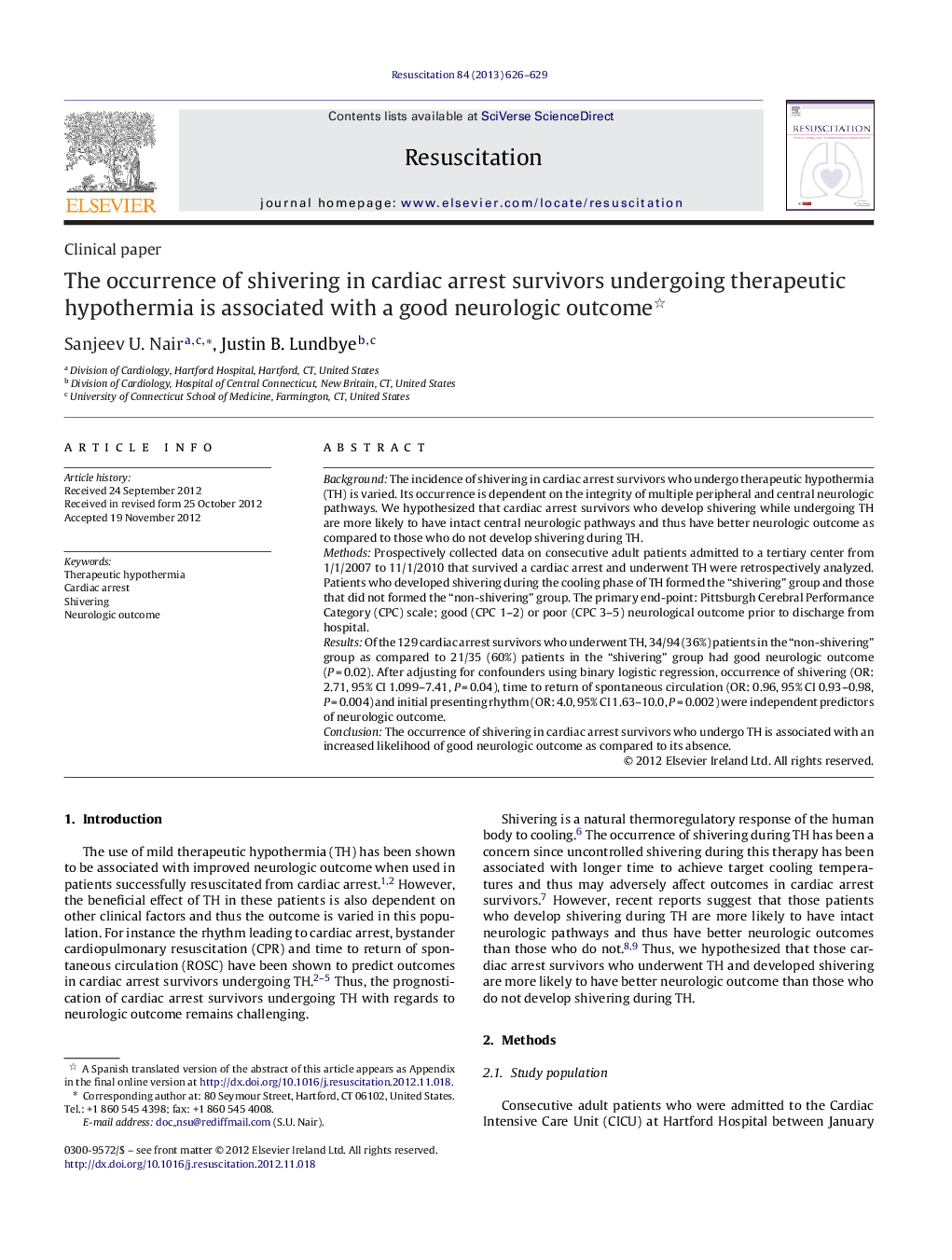| Article ID | Journal | Published Year | Pages | File Type |
|---|---|---|---|---|
| 5998761 | Resuscitation | 2013 | 4 Pages |
BackgroundThe incidence of shivering in cardiac arrest survivors who undergo therapeutic hypothermia (TH) is varied. Its occurrence is dependent on the integrity of multiple peripheral and central neurologic pathways. We hypothesized that cardiac arrest survivors who develop shivering while undergoing TH are more likely to have intact central neurologic pathways and thus have better neurologic outcome as compared to those who do not develop shivering during TH.MethodsProspectively collected data on consecutive adult patients admitted to a tertiary center from 1/1/2007 to 11/1/2010 that survived a cardiac arrest and underwent TH were retrospectively analyzed. Patients who developed shivering during the cooling phase of TH formed the “shivering” group and those that did not formed the “non-shivering” group. The primary end-point: Pittsburgh Cerebral Performance Category (CPC) scale; good (CPC 1-2) or poor (CPC 3-5) neurological outcome prior to discharge from hospital.ResultsOf the 129 cardiac arrest survivors who underwent TH, 34/94 (36%) patients in the “non-shivering” group as compared to 21/35 (60%) patients in the “shivering” group had good neurologic outcome (PÂ =Â 0.02). After adjusting for confounders using binary logistic regression, occurrence of shivering (OR: 2.71, 95% CI 1.099-7.41, PÂ =Â 0.04), time to return of spontaneous circulation (OR: 0.96, 95% CI 0.93-0.98, PÂ =Â 0.004) and initial presenting rhythm (OR: 4.0, 95% CI 1.63-10.0, PÂ =Â 0.002) were independent predictors of neurologic outcome.ConclusionThe occurrence of shivering in cardiac arrest survivors who undergo TH is associated with an increased likelihood of good neurologic outcome as compared to its absence.
